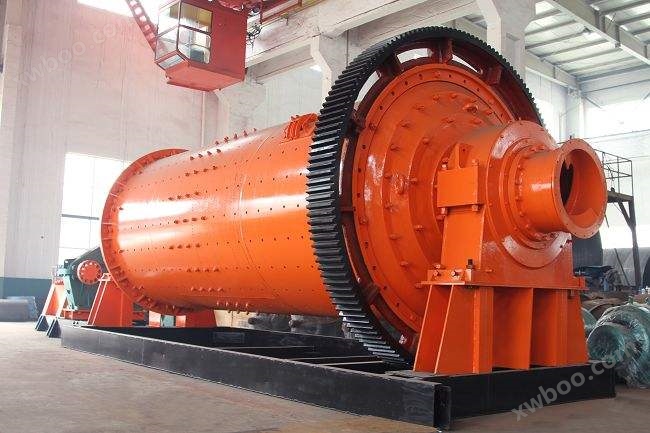Product Introduction
Mineral processing is the most important link in the entire production of mineral products. Generally, large mining enterprises are resource-based enterprises that integrate mining, selection, and smelting. The process of separating useful minerals from useless minerals (usually referred to as gangue) or harmful minerals in mineral raw materials using physical or chemical methods, or separating multiple useful minerals, also known as "mineral processing". In the product, the concentrate with enriched useful components is called concentrate; Tailings enriched with useless components are called tailings; The content of useful components is between that of concentrate and tailings, and those that require further processing are called intermediate ores.
The ore dressing ball mill produced by our factory is a horizontal cylindrical rotating device, with external gear transmission, two compartments, and a grid type steel slag ball mill. The ore is uniformly fed into the first bin of the mill through the feeding device via the hollow shaft screw. The bin is equipped with stepped or corrugated lining plates and contains steel balls of different specifications. The rotation of the cylinder generates centrifugal force, which brings the steel balls to a certain height and then drops them, causing heavy impact and grinding on the minerals. After the minerals reach coarse grinding in the first bin, they enter the second bin through a single-layer partition plate. The bin is lined with a flat lining plate and contains steel balls for further grinding of the ore. The ore powder is discharged through the discharge grate plate to complete the grinding operation.
Structural characteristics of mineral processing ball mill:
Our ore dressing ball mill is composed of main parts such as feeding section, discharging section, rotating section, and transmission section (reducer, small transmission gear, motor, electric control). The hollow shaft is made of cast steel and the inner lining can be replaced. The rotating large gear is processed by casting gear hobbing, and the cylinder body is embedded with wear-resistant lining plate, which has good wear resistance. The machine runs smoothly and reliably.
Note: Depending on the material and ore discharge method, dry steel slag ball mill and wet grid type steel slag ball mill can be selected.
Working principle of mineral processing ball mill:
The ore dressing ball mill is composed of a horizontal simplified body, a hollow shaft for feeding and discharging, and a grinding head. The simplified body is a long cylinder with a grinding body inside. The cylinder is made of steel plate and has a steel lining plate fixed to the simplified body. The grinding body is generally a steel ball, which is loaded into the cylinder according to different diameters and a certain proportion. The grinding body can also be made of steel sections and selected according to the particle size of the grinding material. The material is loaded into the cylinder by the hollow shaft at the feeding end of the mill. When the simplified body of the ball mill rotates, the grinding body is carried away by the cylinder due to inertia, centrifugal force, and frictional force. When it is brought to a certain height, it is thrown down by its own gravity. Smash the material inside the cylinder like a projectile.
The material is uniformly fed into the first bin of the mill through the feeding device via the hollow shaft screw. The bin is equipped with stepped or corrugated lining plates and contains steel balls of different specifications. The rotation of the ball mill cylinder generates centrifugal force, which brings the steel balls to a certain height and then drops them, causing heavy impact and grinding on the material. After the material reaches rough grinding in the first warehouse, it enters the second warehouse through a single-layer partition plate. The warehouse is lined with a flat lining plate and contains steel balls for further grinding of the material. The powdered material is discharged through the discharge grate to complete the grinding operation.
During the rotation of the cylinder, there is also a phenomenon of sliding of the grinding body. During the sliding process, the material is given a grinding effect. In order to effectively utilize the grinding effect, when grinding materials with a particle size of generally 20 mesh, the grinding body cylinder is divided into two sections by a partition plate, which becomes a double chamber. When the material enters the first chamber, it is crushed by the steel ball. When the material enters the second chamber, the steel end grinds the material, and the qualified material is discharged from the hollow shaft at the discharge end. When grinding materials with small feed particles, such as sand No. 2 slag and coarse fly ash, the grinding machine cylinder can be made into a single chamber cylinder without a partition plate, and the grinding volume can also be made of steel sections.


